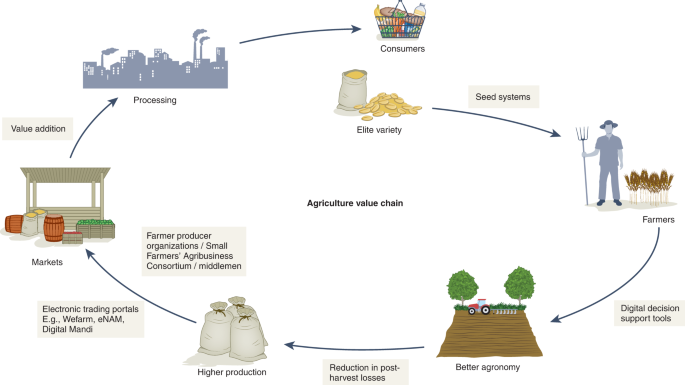It’s the championship game of the Imaginary Math League, where the Atlanta Algebras will face the Carolina Cross Products. The two teams haven’t played each other this season, but earlier in the year Atlanta defeated the Brooklyn Bisectors by a score of 10 to 5, and Brooklyn defeated Carolina by a score of 7 to 3. Does that give us any insight into who will take the title?
Well, here’s one line of thought. If Atlanta beat Brooklyn, then Atlanta is better than Brooklyn, and if Brooklyn beat Carolina, then Brooklyn is better than Carolina. So, if Atlanta is better than Brooklyn and Brooklyn is better than Carolina, then Atlanta should be better than Carolina and win the championship.
If you play competitive games or sports, you know that predicting the outcome of a match is never this straightforward. But from a purely mathematical standpoint, this argument has some appeal. It uses an important idea in mathematics known as transitivity, a familiar property that allows us to construct strings of comparisons across relationships. Transitivity is one of those mathematical properties that are so foundational you may not even notice it.
For example, equality of numbers is transitive. This means that if we know that a=b and b=c, we can conclude that a=c. The “greater than” relationship is also transitive: For real numbers, if a> b and b> c, then a> c. When relationships are transitive, we can compare and combine them, creating an ordering of objects. If Anna is taller than Benji and Benji is taller than Carl, then we can order the three by their height: A, B, C. Transitivity is also behind our naïve argument that if A is better than B and B is better than C, then A is better than C.
Transitivity is present in equality, congruence, similarity, even parallelism. It’s part of all the basic math we do, which makes it especially mathematically interesting when it isn’t there. When analysts rank teams, economists study consumer preferences, or citizens vote on their preferred candidates, a lack of transitivity can lead to surprising outcomes. To better understand these kinds of systems, mathematicians have been studying “intransitive dice” for over 50 years, and a recent paper from the online mathematical collaborative known as the Polymath project has advanced that understanding. To get a sense of what intransitivity looks and feels like, let’s form a league of our own and play around.
In our new math league, players compete by flipping custom coins and comparing the results. Let’s say player A has a coin with the number 10 on one side and the number 6 on the other, and player B’s coin has the numbers 8 and 3. We’ll assume that the coins are fair — meaning each side is equally likely to appear when the coins are flipped — and we’ll represent the numbers on the coins like this.
In a game, players flip their coins, and whoever’s coin shows the higher number is the winner. Who will win when A plays B?
Of course, it depends. Sometimes A will win, sometimes B will win. But it’s not hard to see that A is favored to win against B. There are four ways the game could unfold, and A wins in three of them.
So in the game of A versus B, A has a 75% chance of winning.
Now C comes along and challenges B to a game. C’s coin has a 5 on one side and a 4 on the other. Again there are four possibilities.
Here B and C each win two of the four matchups, so they will each win 50% of the games. B and C are evenly matched.
Now, what would you expect to happen when A and C play? Well, A usually beats B, and B is evenly matched with C, so it seems reasonable to expect that A will probably be favored against C.
But A is more than a favorite. A dominates C, winning 100% of the time.
This might seem surprising, but mathematically it’s not hard to see why it happens. C’s numbers are in between B’s, so C wins any time B flips their lower number. But C’s numbers are both below A’s, so C will never win that matchup. This example doesn’t violate the idea of transitivity, but it does show that things might be more complicated than just A> B> C. A slight change to our game shows just how much more complicated it can be.
Our competitors quickly tire of the two-sided-coin flipping game, as it is easy to completely understand mathematically (see the exercises at the end of the column for more details), so the league decides to upgrade to three-sided coins. (One of the benefits of playing in an imaginary math league is that anything is possible.)
Here are A and B’s coins:
Who is favored in a game between A and B? Well, there are three outcomes for A’s coin toss and three for B, leading to nine possible game outcomes which we can easily chart.
Assuming again that all the outcomes are equally likely, A beats B in five out of the nine outcomes. This means A should win $latex frac{5}{9} approx$ 55% of the time, so A is favored against B.
Feeling a bit down about their prospects, B challenges C to a game. C’s numbers are shown below. Do you like B’s chances?
Again, there are nine possible outcomes in a game of B versus C, so we can just list them out.
We can see that B is looking pretty good against C. In five of the nine possible outcomes, B wins. So B is favored against C.
Poor C now has to play A. With A favored against B and B favored against C, what chance does C have to win? A pretty good one, as it turns out.
In five of the nine possible outcomes here, C beats A. This means that C is favored against A, even though Ais favored against B and B is favored against C.
This is an example of an intransitive system. In more technical terms, the relation “being favored against” in our game is not transitive: A is favored against B, and B is favored against C, but A is not necessarily favored against C.
We don’t often see it in math, but this kind of behavior wouldn’t surprise sports fans. If the Giants beat the Eagles and the Eagles beat the Cowboys, the Cowboys could still very well beat the Giants. There are lots of factors that contribute to the outcome of an individual game. Teams can get better with practice or stagnate if they don’t innovate. Players can change teams. Details like the game’s location — at home or away — or how recently teams have played can impact who wins and who loses.
But this simple example shows that there are purely mathematical reasons behind this kind of intransitivity, too. And this purely mathematical consideration has something in common with the real-world constraints of competition: matchups.
Here are the numbers for A, B and C.
When we view them side by side, it’s easier to see why intransitivity occurs in this situation. Although B is favored to win against C, C’s two medium-high numbers — the 7 and the 6 — give them an advantage over A that B doesn’t have. Even though A is favored against B and B is favored against C, C matches up against A better than B does. This is similar to how an underdog sports team might match up well against a superior opponent because their style of play is difficult for that team to handle, or because a player or coach gives them an edge against that particular opponent.
The fact that sports are intransitive is part of what makes them fun and compelling. After all, if A beats B and B beats C, C isn’t going to just forfeit due to transitivity when they face off with A. In competition, anything can happen. As many a commentator has said after an upset, “That’s why they play the game.”
And that’s why we play with math. To find what’s fun, and compelling, and surprising. Anything can happen.
Note: This article have been indexed to our site. We do not claim legitimacy, ownership or copyright of any of the content above. To see the article at original source Click Here













